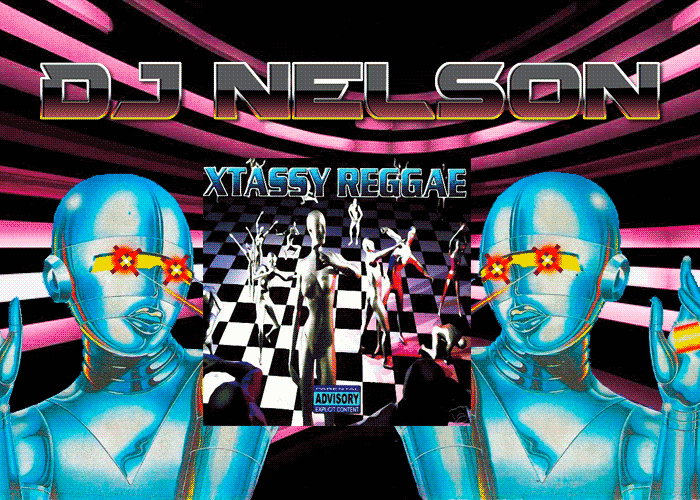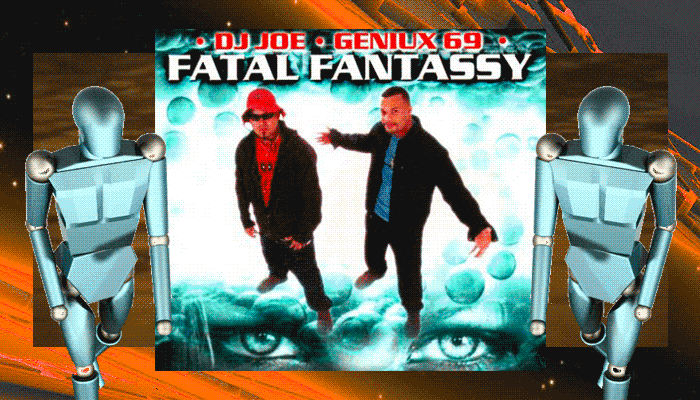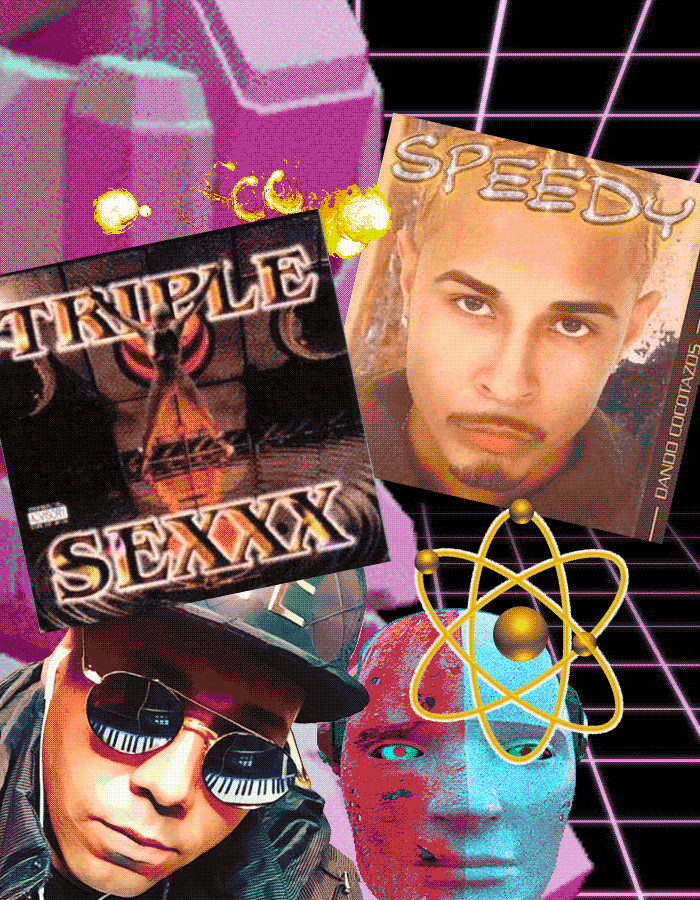Reggaeton began organically as a transformation of dancehall, hip-hop, and reggae en español. As an Afro-diasporic movement, Panama, Puerto Rico, Jamaica, the Dominican Republic, and New York are all pivotal landscapes in the style’s musical evolution. Through Tu Pum Pum: The Story of Reggaeton, a new column by Eduardo Cepeda, we’ll explore reggaeton’s history, sociopolitical struggles, and its impact as a global force in music and culture.
Set foot in just about any perreo function these days, and you’ll hear a genre in the throes of self-reinvention. Reggaeton doesn’t stop. It evolves, over and over and over. Though the radio and streaming charts might tell a singular story – perhaps one of Colombian pop domination, fueled by occasionally palatable dembow made for the masses, or the overlap between the traditional dancehall and reggaeton markets – the reality is that the genre rests on a kaleidoscopic palette. Techno-infused perreo, industrial goth-reggaeton and even dream pop dembow – along with all the classics of course – paint some of the nightscapes in which revelers congregate. These underground scenes always inform the mainstream. And if the rave-adjacent collaborations we’re hearing in the clubs now seem like a product of reggaeton’s so-called “second crossover,” they’re not without precedent.
Twenty years ago, some of the biggest names in underground – and later, reggaeton, after it was consolidated – fused popular club music like house and techno, releasing various mixes and albums showcasing a synthesis of the aforementioned sounds with dembow. In the late 90s and early 2000s, Puerto Rico’s rave scene was exploding. Traditional reggaeton venues started flipping formats, experimenting by throwing electronic club nights. Producers like DJ Nelson, DJ Blass, DJ Goldy and DJ Joe responded to the sound’s popularity by integrating house and techno into dembow riddims. They put out projects that took the sounds of raves and mainstream nightclubs and brought them to reggaeton. Some of these projects focused on original production, while others simply reworked club anthems over perreo-friendly riddims.

DJ Joe’s Fatal Fantassy series took the original production approach, and enlisted the likes of Trebol Clan, Ranking Stone, Plan B, and even Nicky Jam to rap over the techno and hard house-tinged dembow. DJ Blass’ Triple Sexxx series took the same approach, and tapped vocalists like La Dominicana, Great Kilo y La Gringa, and Blass himself. Though the reception was mixed back then, a look at the YouTube comments for these now-classic tapes shows a generation with fond memories of hearing these songs in the clubs of their youth.
Rave and reggaeton started to co-exist in the club.
What these releases also capture is a genre in transition, a shift from “underground” – the sparsely instrumental, sampler- and drum-machine based proto-reggaeton of the early 90s – to the computer-produced reggaeton that spread across the globe. “I think about the time period [those records] were made in, and I think of the switch from drum machines and samplers to like, FL Studio (then called Fruity Loops),” says Riobamba, the Brooklyn-based selector and reggaeton enthusiast. As we’ve examined before, Fruity Loops was a pivotal program in the evolution of the genre, and many of the preset synth sounds meant for electronic music can be heard in much of Luny Tunes’ production, including major hits by Daddy Yankee, Wisin y Yandel, and Don Omar.
Listening to instrumental versions of songs from Daddy Yankee’s Barrio Fino, it’s easy to quickly recognize sounds that could have been featured on a Darude record, but the direct, often harsher approach on these earlier releases might surprise some younger reggaeton fans. And even though many clubgoers’ experiences might be listening to a steady dembow riddim for four hours straight, the versatility of earlier reggaeton DJs’ selections shone through on these releases.

Rave and reggaeton started to co-exist in the club. “People weren’t just listening to one thing, and reggaeton wasn’t necessarily formalized enough to be the one thing you played at the club,” Riobamba tells Remezcla. “It was never confined to just one thing, and I think that’s where you see the influences in the music and like the kind of crossover that we’re seeing now,” she says of the seemingly left-field, experimental sounds that are beginning to dominate the underground nightlife. “I think in some ways, it’s returning to its roots,” she adds.
But rave and dance music weren’t the only genres that were also popular with early reggaeton audiences. Knowing that their audiences didn’t exist in a bubble, DJ Nelson and DJ Goldy took a sort of “open-format” approach when fusing perreo with dance rhythms. Nelson, along with Luny Tunes, was one of the key figures responsible for reggaeton’s embrace of genres like perico ripao, bachata and salsa, and he was no stranger to club-friendly music like hip-hop, techno, and house, describing himself as an experimentalist in Chosen Few’s foundational reggaeton documentary. He knew how to seamlessly navigate through different genres to keep the dancefloor going. On XTASSY REGGAE, Nelson and Goldy showcased their varied tastes by infusing dance and R&B hits with reggaeton as the backbone.
You may have heard some of the epic edits from that release, like their takes on the Eurythmics’ “Sweet Dreams,” Blackstreet’s “No Diggity,” Mousse T’s “I’m Horny,” or David Morales and The Bad Yard Club’s 90s club staple “In De Ghetto.”

Though some of these releases might not have gotten as much shine as earlier albums like the Playero series, or DJ Negro’s The Noise compilations, and were certainly soon overshadowed by the quickly evolving sounds coming out of Nelson’s Mas Flow label, these kinds of releases were central to reggaeton’s evolution, and its place at the table with mainstream club culture. They prove that the misconception of reggaeton as an insular or niche community was entirely a fabrication of the Anglo music industry; the idea that this genre existed in a vacuum, outside of a dialogue with mainstream sounds, is simply inaccurate. Reggaeton was always a musical journey through various genres, and now current underground nightlife spaces are beginning to reflect that ideology again.
Reggaeton was always a musical journey, and underground nightlife spaces are beginning to reflect that ideology again.
The nightclubs and back rooms in virtually nondescript bars are bearing witness to a generation that’s redefining the movement through their own stories. Tastemakers, artists, and producers trickle out of these rooms and make their way into the larger public consciousness. The foundational elements of mainstream reggaeton may be our Daddy Yankees, Ozunas, and even rappers like Bad Bunny – who refreshes the genre through peripheral participation – but it’s through experimentation that the sound manages to stay alive and avoids stagnation.
And now in 2018, as the genre continues to expand across mainstream markets and becomes more widely embraced (and often co-opted) by high-profile entertainers, it’s important to note that before the hyperbolic and anachronistic accounts that we’re bearing witness to a new “Latin crossover taking the world by storm,” reggaeton was just a normal part of the club experience.
Stream a playlist of rave reggaeton hits and tracks by contemporary artists below:







